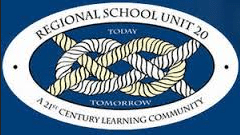The Power of Principals
CompetencyWorks Blog
 Maine’s Center for Best Practices has released a new case study The Power of Principals — I consider it a must-read for anyone starting down the path of proficiency-based education. It’s the story of how Regional School Unit 20 has advanced toward personalized, proficiency-based learning over the past three years. Here are my three big takeaways:
Maine’s Center for Best Practices has released a new case study The Power of Principals — I consider it a must-read for anyone starting down the path of proficiency-based education. It’s the story of how Regional School Unit 20 has advanced toward personalized, proficiency-based learning over the past three years. Here are my three big takeaways:
1) Three important questions to guide design. The case study starts with the story of Searsport District High School. After losing its accreditation and getting a federal Comprehensive School Reform Demonstration grant, they began transitioning to standards-based reforms. In redesigning their school, Searsport District High had focused on two questions:
- What should kids who graduate from Searsport District High School know and be able to do when they graduate, and
- How shall we design curriculum, assessment, instruction, and reporting to ensure that they do know?
The case study explains: There was a third question, though, that they hadn’t yet addressed: What will we do if a student does not know what they need to know?
In response to this question, Searsport devised its system of academic interventions… The intervention system developed two branches: skill-based interventions, for when the student was not getting a standard or learning target, and behavior-based interventions, for when the student was choosing not to complete assignments. In both cases, it was seen as essential that the intervention occur as soon as possible after the need was recognized, certainly during the same day. Check out the flow chart on page 5.
2) The transformative power of “assessment for learning.” The case study describes the journey that Troy Howard Middle School took from being a low-performing school with a culture dominated by mistrust to a culture of learning in which professional learning communities established mechanisms for communications and shared leadership. One of the major turning points is when it narrowed the number of reforms, emphasizing a school-wide implementation of “assessment for learning” as advanced by Rick Stiggins.
3) Schools will take different paths toward personalized, proficiency-based pathways. There are always people who think we can create a top-down, coordinated transition to competency education. Our advisory board has suggested to CompetencyWorks that we need to assume that there is a more organic process that will take place as educators and policymakers come to their own conclusions about the importance of competency education and why it makes the most sense for kids and teachers.
The Power of Principals case study highlights that even with an overarching state policy and a shared vision by the school board, schools will have to find their own path toward personalized, proficiency-based learning. Principal leadership is essential. However, creating a culture of learning requires creating structures that fully supports educators learning from each other, experts, and other schools. Some schools may embrace the full personalized, proficiency-based approach and others may begin with a focus on assessment for learning or changing the culture through proficiency-based grading.
Over time we may learn that some doorways lead to more accelerated reforms, and other doorways may lead to a maze of issues that go nowhere. At this time in our national journey to competency education, the best we can do is learn from each other.